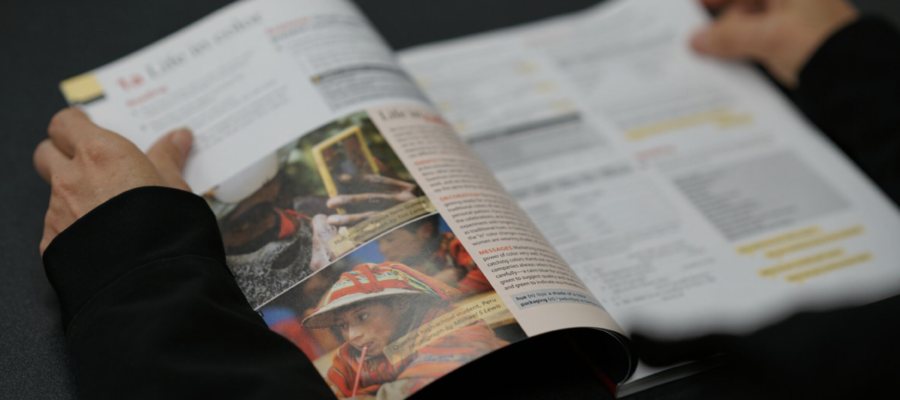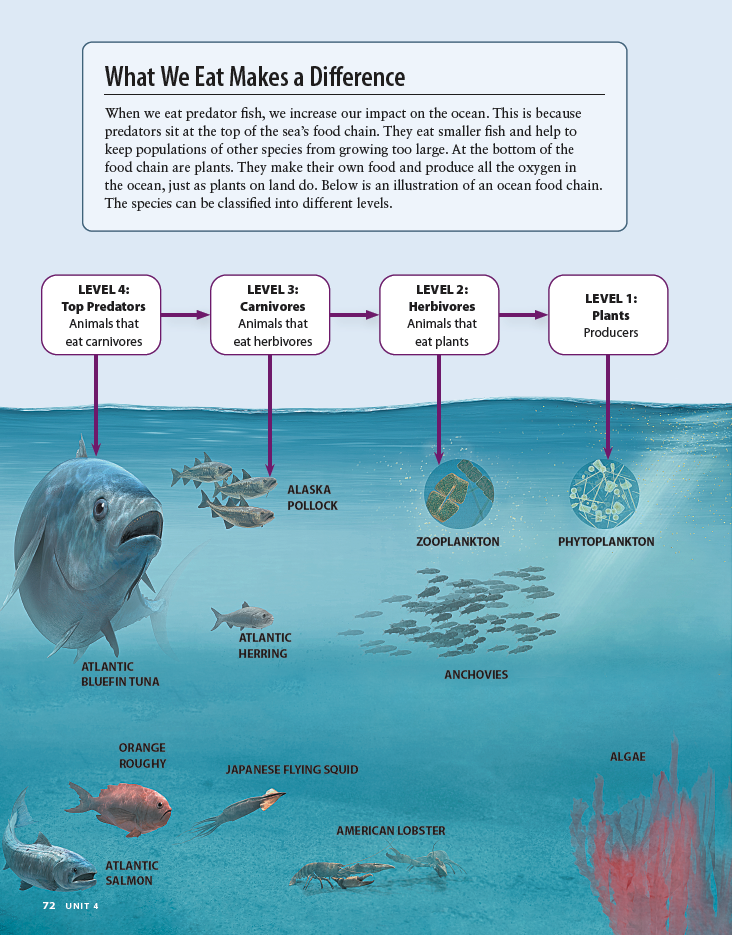Reading is one of the most essential, yet challenging, skills for English language learners to develop. Becoming a proficient reader requires consistent practice, patience … and support from the instructor!
Below are some strategies for teaching academic reading that you can use to help your students acquire the skills and confidence they need to read across different genres and text types. The examples are taken from the third edition of Pathways Reading and Writing.
Before Reading
Build and/or activate background knowledge
Before going over a reading passage with your students, it’s important to build their background knowledge to set them up for success. One way to do this is by pre-teaching new vocabulary that students will encounter in the text. For example, if students are going to read a passage about volcanoes, make sure they understand key words related to that topic:
Also, look for historical or cultural references in the reading passage that students may not be familiar with and describe what they mean. By explaining such references beforehand and pre-teaching key content vocabulary, learners will be more prepared for what they are about to read.
If, on the other hand, your students are already somewhat familiar with the topic, ask questions to activate their prior knowledge. For instance, on the topic of volcanoes, you could ask students to think of famous examples of volcanic eruptions. Encourage them to discuss their ideas with their classmates. This can help spark students’ curiosity and increase their motivation to read.
Skim and predict
Other pre-reading activities, like skimming, help students get a sense of what a text is about. Skimming a passage involves looking at parts of it quickly—e.g., the title, subheads, and the first and last sentences of paragraphs. Set a time limit so students skim rather than read. Then they can predict what the main ideas of the passage are, and be better prepared before reading:
While Reading
Read aloud or play the audio
When going over a reading passage for the first time, it’s helpful for teachers to read aloud to the class. Alternatively, if there is accompanying audio, play it and have students read along. Not only will students get to hear spoken English and learn the correct pronunciation of words, they’ll also get reading practice by following along in their books. After that, students can take turns reading each paragraph aloud.
Annotate the text
You should also give your students time to read a passage individually and annotate it as they read. This will make it easier for them to remember the content and review it later. There are several ways to annotate a text—for instance, writing notes in the margins, highlighting important ideas, or circling new vocabulary. Here’s an example of a paragraph with annotations:
In the annotated paragraph above, a reader has highlighted the main idea in pink and the supporting ideas in blue. An unfamiliar word, entrepreneurs, is circled. A question mark indicates that the student doesn’t understand the last underlined sentence and plans to re-read it.
Use context to guess meaning
Dealing with unfamiliar words while reading is challenging for language learners, particularly lower-level learners. If students have to constantly stop reading to look up words in a dictionary, their reading fluency and comprehension can be disrupted. It’s therefore important to train students to guess the meaning of difficult or unknown words using context clues:
Training your students to guess meaning from context is a good way to keep them engaged with a text, and reduces the likelihood that they will lose focus while reading.
After Reading
Prepare for standardized tests
After reading a passage, test students’ comprehension of the main ideas and details with relevant, level-appropriate activities. You may wish to focus on common question types found on standardized exams, such as TOEFL and IELTS. Here’s a comprehension activity from Level 2 of Pathways Reading and Writing that follows the format of an IELTS Reading question type:
Scan the text
When you scan a text, you move your eyes quickly over it and look for specific things. For example, to get information about times, dates, and amounts, scan for numbers. To get information about people and places, scan for capitalized words. Asking your students scanning questions is a great way to train them to pick out the most essential pieces of information from a reading passage:
Depending on the content of the passage, students may also need explicit instruction in recognizing certain signal words. For instance, teach your students about words that signal cause and effect, such as because, so, if … then, therefore, and as a result. Then have them scan the reading material for those signal words. By doing so, students will be able to identify causes and effects in the text. In addition, they’ll gain a better understanding of how different ideas in the passage are related:
Summarize
Another way to test reading comprehension is to have students summarize what they’ve read. When a student can summarize a text in their own words, it shows that they’ve developed an excellent understanding of the reading material’s main concept and message:
The Reading Skill box above explains how to summarize a passage using a chart with abbreviations and symbols. Alternatively, you could get your students to summarize a passage orally or in a written paragraph with complete sentences. The most important thing is that students restate the information as much as possible in their own words.
Discuss
It’s also a good idea to ask discussion-based or open-ended questions about a reading:
In the reading passage excerpt above, students read about the environmental impacts of eating predator fish. This is followed by an activity that encourages them to reflect on what they have just read with a partner. Discussion-based activities like the one above enable students to engage critically with a reading passage and make connections with their own lives. This promotes deeper understanding and insight of the reading material.
With the support of well-structured activities before, during, and after reading, students will continue to improve their academic reading skills and become better readers of the English language!
What other strategies for teaching academic reading have you found useful? Let us know in the comments!
With carefully guided lessons and explicit reading and writing practice, Pathways develops the language skills, critical thinking, and learning strategies required for academic success.













